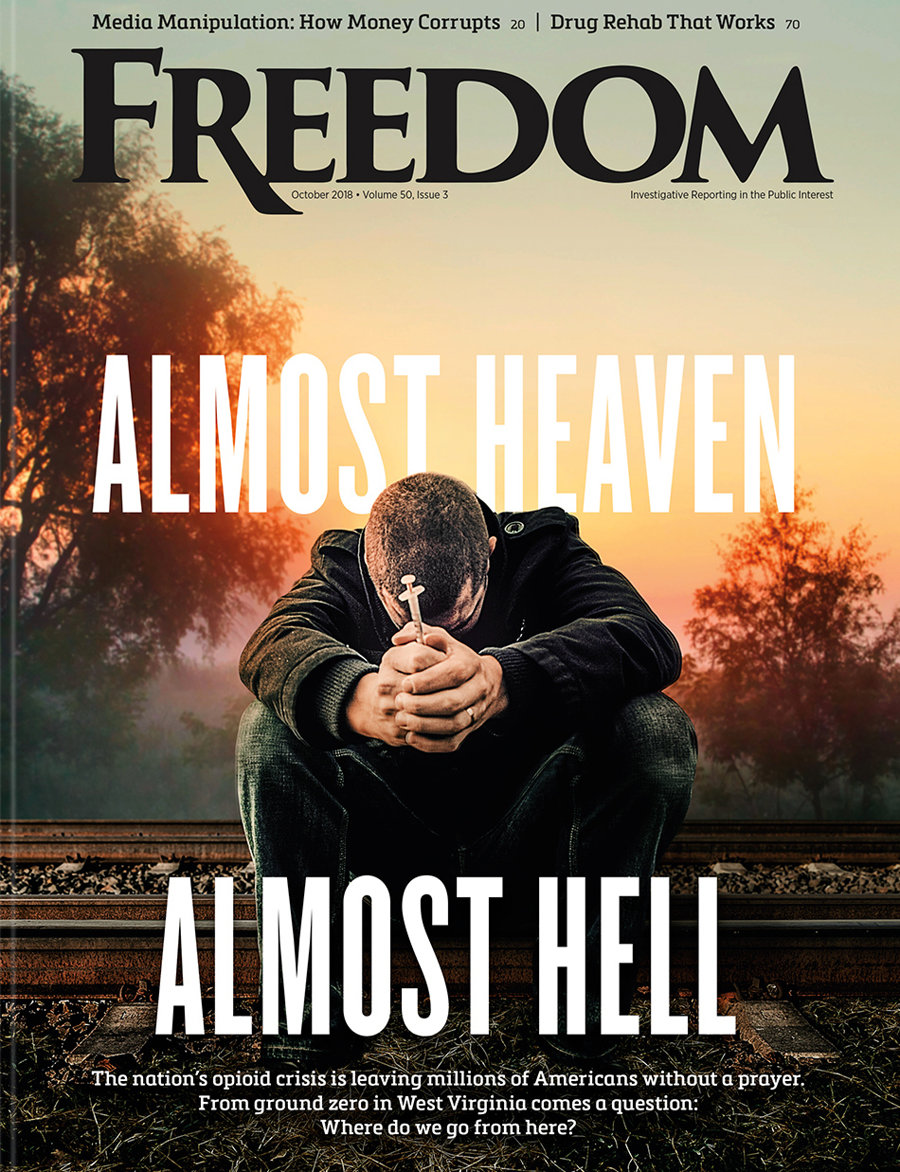Would you rather be bummed out or dead?
And would you rather mainline your favorite addictive lethal drug of choice or snort it up?
Which method gives the better buzz?
That’s what two psychiatrists at an Ivy League university are planning to spend millions—largely of your tax dollars—to find out.
The drug in question is ketamine, long a favorite rave, party and date-rape drug among the young set, who often take it searching for a psychedelic trip.
If they’re lucky, that’s all they will get.
If not? Devastating brain damage, shattering, life-destroying addiction or an early grave are what await.
Ketamine is a potentially lethal and highly addictive anesthetic drug yet, astonishingly, the Patient-Centered Outcomes Research Institute (PCORI) is giving a staggering $12.6 million to two Yale psychiatrists to study which method of administering ketamine gives depressed people a better high.
Talk about insane.
That’s what happened to Matthew Perry. He found out the hardest possible way that ketamine can kill.
Psychiatrists Gerard Sanacora and Samuel Wilkinson plan to round up 400 people suffering from depression and shoot them up, or snort them up, with the drug in two forms—intravenous ketamine (not FDA approved as a treatment for depression) and the FDA-approved nasal spray esketamine, which carries the cute commercial name of Spravato—to see which gets them giggling the fastest and the mostest.
But PCORI is partially funded through the “general fund of the Treasury,” i.e., tax money, as well as “a fee assessed on private insurance and self-insured health plans.”
The justification for the study is to find “treatments” for “treatment-resistant depression” and remedy “growing disagreement among experts as to how similar or different the two treatments [intravenous ketamine and Spravato] are in relation to effectiveness and patient acceptability.… There has never been a study directly comparing the two.”
How does ketamine affect someone who is depressed? What are the potential side effects? Frankly, the psychiatrists haven’t got a clue.
But they do have a theory: It increases levels of glutamate, the most abundant chemical messenger in the brain. “The result? A greater impact on more brain cells at one time,” writes Johns Hopkins Medicine.
True, it’s only a theory, but what the heck—let’s give it a go anyway, right? Juice ’em up! After all, we’ve got $12.6 million to play with. Might as well earn it.

But who benefits? Could it be that the financial pressure from ketamine clinics plays a role in the push for acceptance of ketamine as an accepted and approved “treatment” for depression?
After all, Grand View Research estimates that the market for ketamine clinics reached $3.4 billion in 2023 and projects that it will continue to grow—about 10 percent per year—through 2030.
Side effects of ketamine include disorientation and general confusion, drowsiness, increased heart rate and elevated blood pressure, arrhythmias and heart palpitations, abdominal pain, nausea, vomiting and respiratory distress.
Sounds like fun, doesn’t it? The questions are: Why on Earth would anyone want to take this stuff? And why on Earth are psychiatrists putting this stuff in people?
And why, oh why, would taxpayers want to pay millions for it?
Ketamine’s seductive appeal can lead to long-term and possibly fatal addiction. The effects of the drug lessen over time, leading users to increase their dosage, chasing that old high they loved, and leading to a potentially lethal addiction.
That’s what happened to Matthew Perry. He found out the hardest possible way that ketamine can kill.
“Drug dealers selling dangerous substances are gambling with other people’s lives over greed.”
He died last October 28 from the “acute effects of ketamine,” the Los Angeles County Medical Examiner said, adding, “At the high levels of ketamine found in his post-mortem blood specimens, the main lethal effects would be from both cardiovascular overstimulation and respiratory depression.”
Perry was being treated for depression at a ketamine clinic, but was also obtaining more of the drug from illegal street sources.
Perry was said to have bought dozens of vials of ketamine for thousands of dollars and, in the three days before his death, had been injected with the drug six times daily.

Jasveen Sangha was Perry’s alleged illegal dealer. Sangha, known among Hollywood celebrity druggies as the “Ketamine Queen,” is now being held without bail and may be looking at a life sentence, swapping her fancy, pricey fashion duds for an orange jumpsuit.
Her home was termed a “stash house” and “drug emporium” by police who, when they searched, found thousands of illegal pills, including methamphetamine, Xanax, cocaine, psilocybin mushrooms and, yes, a lot of ketamine.
Prosecutors say Sangha sold around 50 vials of ketamine to Perry for about $11,000.
She lived a lavish life, hanging out with celebrities, attending posh parties, traveling internationally to Mexico and Japan—all, police say, financed by dealing ketamine to many of Hollywood’s elite.
US Attorney Martin Estrada said Sangha, as well as others arrested in connection with Perry’s death, “cared more about profiting off of Mr. Perry than caring for his well-being. Drug dealers selling dangerous substances are gambling with other people’s lives over greed.”
But you don’t need fancy designer clothing to become a big-time drug dealer. White lab coats work just fine, so long as you’re injecting or snorting up depressed people as “research” to find out which version of the drug gives the better high.
US Drug Enforcement Administration Administrator Anne Milgram said of Perry’s death, “This, unfortunately, is a tragic arc that we have seen thinking back to the beginning of the opioid epidemic, where many Americans became addicted to controlled substances in doctors’ offices and through medical practitioners that then turned into street addiction as well.”
Ketamine is out there, on the street, illegally—but easily obtainable. It makes us wonder whether the two Yale psychiatrists plan a follow-up study of their 400 depressed patients after their “research project” comes to an end.
Let’s see how many leave the lab and travel to the mean streets to pick up an illegal stash of Special K. Let’s find out how many of them lose their minds and memories, or how many of them become hopelessly addicted.
Let’s find out how many of them die from ketamine over the next few months.
Let’s find out how many of them make that final and fatal decision: Would they rather be sad, or addicted? Would they rather be bummed out, or dead?






















